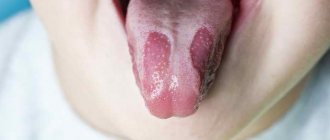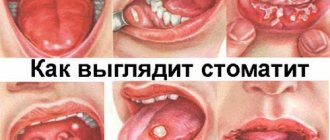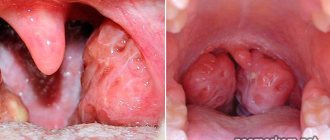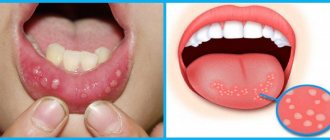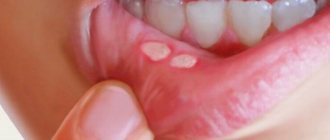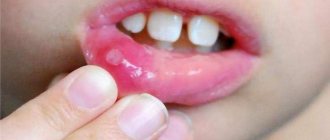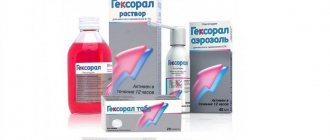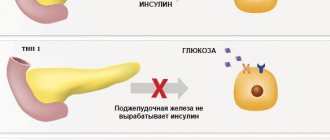Causes of stomatitis on the tonsils
Dirty hands are one of the causes of mouth infections.
Stomatitis on the tonsils is a much more common disease than is commonly believed. However, adults rarely go to the doctor when they have a sore throat and treat stomatitis as a sore throat. Such therapy can be successful for stomatitis at the initial stage, but can also lead to the disease becoming chronic.
The most common causes of the disease:
- advanced caries;
- weakened immune system;
- fungi, viruses, bacteria;
- poor nutrition;
- tonsil injury;
- long-term use of antibiotics or corticosteroids.
In general, stomatitis on the tonsils is caused by bacterial agents, fungi or viruses. But there are many reasons for the development of infection in the oral cavity.
Stomatitis on the tonsils can accompany other diseases. Thus, against the background of chickenpox, children are often diagnosed with aphthous stomatitis on the tonsils, caused by the activity of the herpes virus. This can also be observed in adults, with an exacerbation of herpes infection, the symptom of which is the so-called cold on the lips.
If we are talking about fungal infection of the tonsils, the cause is oral candidiasis, including that caused by long-term use of antibiotics, which provokes an imbalance in the normal balance of microflora in the mucous membrane of the mouth and throat.
Note! Another unobvious cause of stomatitis is injury to the throat from rough food.
Tonsils are easily scratched when eating large amounts of rough food, such as crackers. Then you just need to put dirty fingers in your mouth, which children often do, for the infection to penetrate into the injured area of the mucous membrane and stomatitis develops.
Provoking factors
Smoking increases the likelihood of developing stomatitis
The main provoking factor in the development of the disease is decreased immunity. In children, this is associated with recent illnesses and long-term use of antibacterial drugs.
Factors that increase the risk of developing stomatitis on the tonsils in adults:
- smoking;
- unbalanced diet;
- advanced caries, periodontal disease;
- hypothermia;
- metabolic disease;
- endocrine diseases;
- chronic candidiasis.
The risk of stomatitis of the oral cavity and tonsils increases in people who wear bite correction systems (braces, staples). The presence of foreign objects in the mouth requires increased attention to hygiene. Ignoring the rules for caring for the system leads to increased growth of bacteria in the oral cavity, which is potentially dangerous for the development of stomatitis.
Ulcers on the tonsils (PHOTO): causes and treatment of white ulcers on the tonsils in a child without fever
Endocrinologist of the highest category Anna Valerievna
30310
Update date: March 2020
Ulcers on the tonsils are a good reason to worry about your health. Their appearance is considered as the development of a pathological process that requires medical supervision. There is a whole group of reasons that provoke ulcerative lesions of the tonsils in adults and children. What exactly led to the disease can be found out during diagnostic measures.
Causes of ulcers on the tonsils
Poor oral hygiene leads to the formation of infectious inflammations on the tonsils
An ulcer on the tonsil is a symptom of a disease that needs to be diagnosed. It is often considered as a complication of an undetected and untreated pathology.
The following diseases can provoke the formation of ulcers in the tonsils:
- Angina of gangrenous type. With its development, damage to the mucous membrane of the entire oral cavity is observed. Most often, this problem is faced by people who are worried about an acute form of immunodeficiency. Ulcers are formed due to pathogenic microbes that actively multiply in the mouth.
- Viral sore throat. If the disease is mild, the patient will not be bothered by ulcerative lesions. The risk of its development appears in people who ignore treatment of dental diseases, such as periodontitis.
- Sore throat of bacterial type. From the first days of inflammation, symptoms of necrosis are observed. In this case, ulcers are considered as one of the main signs of the disease.
- Chronic form of tonsillitis. Necrosis occurs in patients who have started the disease, that is, have not begun to fight the root cause of its development in a timely manner. With this diagnosis, patients complain of severe pain, elevated body temperature and apathy.
- Diphtheria tonsils. The pathology is caused by tissue damage by the diphtheria bacillus. The symptoms of the disease directly depend on its stage of development. In both mild and complicated forms of diphtheria, ulcers are observed on the mucous membrane of the organ.
An ulcer on the tonsil is most often a consequence of the above diseases, which occur in children and adults.
Important! Since ulcers can indicate a serious illness, it is strictly forbidden to try to cure them with home methods. With such a symptom, consultation with a specialist is required.
Other reasons can lead to ulcerative lesions of the tonsils:
- Suffered from acute respiratory viral infection, which caused a decrease in the body's defenses.
- Heart disorder.
- Dysfunction of the hematopoietic system.
- Decreased vascular tone.
- Vitamin deficiency.
- Irregular brushing of teeth and rinsing the mouth.
- Syphilis of the second degree.
If a person has these problems, then he must take measures to prevent the formation of ulcers in the tonsils, as he automatically falls into the risk group.
Types of lesions
Doctors distinguish several types of ulcerative lesions of the tonsils. Pathology can take the following forms:
- Medication. The reason for the appearance of a large number of ulcers on the tonsils is the failure of the human body to take the medications that he must take for the whole course.
- Primary herpetic. It is considered the most common form. It is more often noticed in children rather than adults. Unknowingly, parents may confuse sores with ordinary herpes.
- Candida. The lesion is caused by the active growth of a yeast-like fungus in the oral cavity.
- Traumatic. Ulcers form on the mucous membrane after it is damaged. Most often, swallowing hot food leads to this result.
- Infectious. A person becomes infected with an infection from other people or animals. The progression of the disease leads to complications, including ulcerative lesions of the tonsils.
- Ulcerative-necrotic. Pathology occurs due to pathogenic bacteria entering the oral cavity. This problem is faced by people with weakened immune systems.
- Allergic. One of the rare forms of tonsil ulcers. Usually occurs when consuming a product or medication to which there is an individual intolerance.
As a rule, ulcers on the tonsils accompany the development of another disease, for example, stomatitis or tonsillitis. They cannot appear by themselves. There must be a factor that leads to such an outcome.
Symptoms
Eating food and water is accompanied by discomfort
Ulcers may appear on the tonsils without fever. At the same time, a person experiences symptoms of malaise, which make it possible to identify the root cause of the painful condition.
The following signs help to suspect the appearance of ulcers on the tonsils:
- Normal body temperature. If it exceeds the permissible limits, it means that we are talking about a severe course of the pathology, the timely treatment of which was missed.
- Enlarged lymph node at the site of the inflammatory process.
- The presence of white plaque on the tonsils, which can be removed without much effort. He covers up the ulcer.
- Slight soreness in the throat.
- Sensation of a foreign body in the throat.
- Bad breath.
- Increased salivation.
If you notice such symptoms, it is strongly recommended to seek medical help. This will allow you to diagnose the disease in a timely manner and cope with it safely.
Diagnostics
Ulcers located on the tonsils are identified during diagnostic procedures.
When you first visit a doctor, you need to tell him in detail about your symptoms. It is also important to provide information about medications taken in the past few days, as this may influence the choice of drug therapy.
The attending physician determines ulcers on the tonsils by performing the following diagnostic methods:
- Examination of the throat.
- Palpation of lymph nodes.
- General blood analysis.
- Study of immune reactions.
- Throat swab.
- Antibioticogram.
The last diagnostic option is intended to determine the causative agent of the disease that led to the formation of ulcers in the throat.
Treatment methods for ulcers on the tonsils
You should not self-medicate, otherwise it can only worsen the situation.
The doctor will explain how to treat ulcerative lesions of the tonsils, with whom you must make an appointment if a problem is detected.
You cannot treat an ulcer on your child’s tonsils on your own. Until consultation with a specialist, it is forbidden to give anything to the baby, as this may worsen his condition.
Treatment of ulcers on the tonsils can be medicinal and physiotherapeutic. With the permission of a doctor, it is also permissible to use traditional medicine methods that give good results.
Drug therapy
In most cases, ulcers on the tonsils can be treated with medication. To eliminate the pathology, you will need to take drugs from several drug groups:
- Antibiotics.
- Antipyretic.
- Anti-inflammatory.
- Analgesics.
- Antifungal.
The choice of drugs directly depends on what caused the white deposits in the form of plaque and ulcers in the throat.
The dosage of medications and the duration of their use are determined by the attending physician who diagnosed the patient. Without his knowledge, it is prohibited to make adjustments to the course of therapy, as this may adversely affect its effectiveness.
Most drugs cause side effects. Therefore, the patient must carefully monitor his condition while taking them. And then the treatment will go according to plan. If during therapy the patient’s well-being begins to deteriorate, his attending physician will have to think about changing the medication.
Physiotherapeutic method of treatment
The doctor decides how to treat ulcers in the throat in the area where the tonsils are located. At his discretion, he may suggest physical therapy. Its action is aimed at improving the patient’s health and preventing relapses of the disease.
During remission, a course of laser therapy and ultraviolet irradiation of the tonsils is proposed.
Folk remedies to help
The drink must be drunk whole, at once, without dividing it into parts and without leaving
Traditional treatment methods can be combined with folk remedies if the patient has no contraindications to them.
Regular rinsing of the mouth with decoctions based on mint, oak bark, chamomile and eucalyptus has a good effect. Plants can be used individually or in combination with each other.
The following folk remedies help to cope with ulcers in the tonsils more quickly:
- A mixture of kefir, lemon juice and beets. The healing product must be taken for ulcers twice a day. The process of its preparation is simple. You need to mix the juice of ½ lemon, a glass of kefir, 3 tbsp. l. beet juice and 1 tsp. rosehip syrup. The main components of the medicine must be thoroughly mixed. The entire prepared portion is taken at one time.
- Herbal tea. It is recommended for colds. Also helps heal mouth ulcers. Raspberry leaves and linden honey are used to prepare the drink. The last ingredient is added to the tea after it has cooled slightly.
Before using this folk remedy, you must make sure that there are no contraindications to the products that are present in the composition.
Prevention
Throat ulcers bring severe discomfort to a person. In addition, they can lead to various diseases with their own complications. Therefore, it is worth thinking about taking preventive measures to prevent such an outcome.
Important! Regular care of oral hygiene can prevent the appearance of ulcers in the tonsils. This is where pathogenic microorganisms accumulate, which can cause disease.
In order to prevent the formation of ulcers on the tonsils, you must listen to the following recommendations:
- It is advisable to remove sharp edges on the teeth, as they easily injure the oral mucosa. This is how ulcers appear on their surface, which quickly spread to neighboring areas.
- It is not enough to simply brush your teeth twice a day. Additionally, it is recommended to rinse your mouth thoroughly after each meal. For these purposes, you need to use special rinses or decoctions that are prepared according to traditional medicine recipes. It is best to pay attention to formulations that contain herbs with antiseptic and anti-inflammatory properties.
- It is necessary to exclude from the daily diet foods and drinks that tend to irritate the mucous membranes.
Good and accessible methods of prevention include diet and hardening your body. It is a healthy lifestyle that allows a person to avoid many dangerous diseases.
Every person should be interested in their health. Even minor symptoms that may indicate the early development of the disease should not be ignored. Addressing such complaints to a specialist allows you to get rid of the pathology in a timely manner before it causes serious harm to the body.
Even if nothing bothers a person, he should visit a doctor for a routine examination. There are many cases where, with its help, doctors were able to identify a hidden disease.
The formation of ulcers on the tonsils can also be classified as a similar pathology, since not all people notice their presence.
They only feel unpleasant symptoms, which, according to most, do not require special attention.
Symptoms of stomatitis on the tonsils
The main problem of the disease is that stomatitis on the tonsils cannot be determined from a photo. Moreover, an independent detailed examination of the tonsils will also lead to nothing, since the disease is visualized as a sore throat or purulent plugs in chronic tonsillitis. Only a qualified doctor can make a diagnosis.
General symptoms are the same as those of a sore throat. These include:
- sore throat that gets worse when swallowing;
- plaque on the tonsils;
- enlarged tonsillar lymph nodes;
- redness and swelling of the throat mucosa, noticeable upon examination.
The color of the plaque depends on the cause of stomatitis. A fungal disease is characterized by a dense white coating, a bacterial disease is characterized by grayish patches on the tonsils, and aphthous stomatitis can manifest itself as small red ulcers.
Common symptoms include fever, hoarseness, and general malaise. Such signs are observed only with advanced bacterial stomatitis.
Having figured out whether stomatitis occurs on the tonsils, you should know how it can be distinguished from tonsillitis. Despite the similar clinical picture, these diseases still have one important difference - with angina, only the tonsils are affected, and with stomatitis, ulcers or plaque are noticeable in other areas of the mouth and throat.
Ulcers on the tonsils and tonsils in children and adults
Stomatitis is an infectious pathology that affects the oral cavity. Often, with the development of such a disease, a white plaque and ulcers on the tonsils form in the mouth. Children are more susceptible to this form of the disease, and adults are less likely to suffer.
As a rule, stomatitis forms on the tonsils as a complication after a viral infection. In addition, the disease in question often affects a person due to poor hygiene. The peculiarity of the pathology is the absence of negative symptoms at an earlier stage. As a result, it is quite difficult to detect pathology in a timely manner.
Reasons for appearance
There are several reasons why an ulcer develops on the tonsil:
- re-infection with viruses or bacteria after acute respiratory viral infection;
- mucosal burns;
- circulatory disorders due to which starvation of epithelial cells occurs;
- pathologies of the stomach due to which there is a regular release of acid into the pharynx;
- malignant neoplasms that contribute to metabolic disorders;
- allergic reaction;
- hormonal imbalance of the body;
- deficiency of nutrients.
In addition, an ulcer on the tonsil can signal other dangerous defects, such as:
- gangrenous tonsillitis. With this type of disease, ulcerative lesions form not only on the tonsils, but also affect the oral cavity, due to which they are similar to stomatitis;
- sore throat caused by bacteria and viruses. With this type, a sharp reaction in the form of inflammation first appears in the body. If the defect is severe, wounds and ulcers form in the gaps;
- if tonsillitis is in an advanced form, ulcers will be observed not only in the mouth, but also on the pharyngeal mucosa;
- diphtheria sore throat. With this type of disease, erosions will be clearly visible on the tonsils. With diphtheria type, you cannot hesitate to seek help.
Important: Mouth ulcers can form as a result of caries affecting the teeth or inflammation of the gums. With such atypical phenomena, microbes enter the tonsils and activate the reproduction process. In this case, treatment will need to be carried out comprehensively.
Ulcers on the tonsils that occur as a result of the described disorders are especially dangerous in cases of reduced immunity. Since in this case the body is not able to block the development of pathogenic microflora.
What is the difference between stomatitis and sore throat?
Sometimes a sore throat of bacterial origin is confused with stomatitis. These completely different pathologies have similar symptoms. However, sometimes both defects can develop in parallel.
However, despite the similar course of defects, there are still differences and are as follows. A sore throat can be detected at the beginning of its formation. With this pathology, a white coating initially appears in the mouth and on the tonsils. Moreover, with angina, only the upper palatine tonsils are affected. And the defeat is provoked by viral agents.
But with stomatitis, the tonsils are affected at a late stage. As a rule, the formations first affect the tongue and cheeks. This complication is also called dental sore throat.
There are some common features between these two defects:
- temperature increase;
- high fever;
- swollen lymph nodes;
- feeling of weakness in the body.
Separately, it is worth emphasizing one important point. Plaque with stomatitis always appears, which cannot be said about sore throat.
How does stomatitis differ from other similar ailments?
Only an ENT specialist can distinguish ulcers formed as a result of stomatitis from other similar pathologies affecting the oral cavity.
It is important to understand that most pathologies are very dangerous and can cause dangerous conditions in the form of bloody discharge.
Therefore, in order to exclude serious consequences, you need to submit biological material for research. This will help determine the origin of the pathology.
As a rule, stomatitis and tonsillitis in acute form are characterized by pronounced symptoms. Therefore, laboratory diagnosis may not be necessary. And these pathologies differ from stomatitis in that with the first two ailments, pain is noted only in the larynx area. In the case when the mucous membrane is affected by stomatitis, the pain spreads throughout the entire oral cavity.
Treatment methods
Treatment for each type of ulcer is selected by the doctor based on diagnostic data. In this case, the scheme is similar to that of drug therapy for tonsillitis:
- To disinfect the throat, solutions based on furatsilin are prescribed. The most suitable would be Tantum Verde or Chlorhexedine;
- You can disinfect the lining of the nasopharynx with essential oils dissolved in water. Sea buckthorn oil or tea tree extract are suitable for these purposes;
- to relieve negative feelings and suppress inflammation, use Isla and Chrolophyllipt lozenges in tablet form;
- the proliferation of pathogenic microflora on damaged mucous membranes can be eliminated with Ingalipt or Angilex sprays;
- if the provocateur is a virus, antiviral medications, Amizon or Acyclovir are prescribed;
- to combat the bacterial form, antibiotics of the penicillin class are prescribed;
- Antimicrobial medications, Ketoconazole or Natamycin, fight the fungal form well;
- It is also mandatory to treat ulcers with an antiseptic solution. To do this, take special tampons, moisten them in Lugol’s or Chlorophyllipt solution, and then clean the ulcers of plaque, thereby promoting the renewal of healthy cells.
Important: If erosive formations in the mouth are identified, antibiotics cannot be avoided. Since the appearance of such wounds indicates that the pathology is of bacterial origin.
In addition, to prevent the development of an allergic reaction and relieve swelling, antihistamines, Loratidine or Aleron, are added to the drug complex.
With timely detection of the disease and adequate treatment, the risk of complications is reduced to zero. In cases where the pathology is diagnosed at an advanced stage, surgical intervention is possible.
Diagnosis of the disease
Donating blood allows you to most accurately determine the nature and picture of the disease
Stomatitis on the tonsils is indistinguishable from tonsillitis in the photo, so it is recommended to consult a doctor rather than try to treat the problem yourself without finding out its cause.
Diagnostic methods:
- physical examination;
- general blood analysis;
- throat swab.
A smear is necessary to clarify the nature of inflammation of the mucous membrane. The further treatment regimen depends on this.
To make a diagnosis, you need to contact a general practitioner - a therapist or family doctor. Stomatitis on the tonsils in a child is diagnosed by a pediatrician.
Diagnosis and symptoms of the disease in adults
Signs depend on the type of disease. But still, doctors identify general symptoms, the occurrence of which should force the patient to see a doctor:
- The occurrence of snoring and discomfort in the nasopharynx at night.
- Dry throat despite drinking plenty of fluids. Sensation of scratching and itching deep in the throat.
- Inflammation of the mucous membrane of the tonsils, accompanied by pain and burning.
Attention! In some cases, general weakness, hearing loss, mild conjunctivitis and the occurrence of erosions may be added to the main symptoms of stomatitis. For a more detailed diagnosis of stomatitis in the throat, doctors use the laryngoscopy method, after which blood is given for analysis and a swab is taken from the throat. In case of complex disease, endoscopy, ultrasound, and biopsy are used
Sometimes a puncture is taken from purulent ulcers
In case of complex disease, endoscopy, ultrasound, and biopsy are used. Sometimes a puncture is taken from purulent ulcers
For a more detailed diagnosis of stomatitis in the throat, doctors use the laryngoscopy method, after which blood is given for analysis and a swab is taken from the throat. In case of complex disease, endoscopy, ultrasound, and biopsy are used. Sometimes a puncture is taken from purulent ulcers.
As doctors understand, laryngeal stomatitis is the general name for types of stomatitis that can separately affect the tonsils, tonsils, and mucous membranes of the throat. But often the disease develops on all organs of the larynx simultaneously.
Photo 2. The procedure for performing laryngoscopy to examine the affected area and give the patient the correct diagnosis.
Drug treatment
Complex therapy of the disease involves the use of drugs from three groups: antibacterial, painkillers and tissue regeneration.
Hexoral spray is widely used to eliminate infection. Lugol's solution is also effective, rinsing copiously, which kills the infection. Ingafitol and Evcarom are also used to prepare warm rinsing solutions. Eucalyptus M is used in tablet form.
Important! Miramistin is a universal antiseptic that destroys any kind of infection in the throat. To relieve pain, use Hexoral and Lidocaine lozenges in the form of a spray. Lidocaine has an analgesic effect, while the tablets destroy infection inside the body due to the content of chlorhexidine in the composition
Lidocaine has an analgesic effect, while the tablets destroy infection inside the body due to the content of chlorhexidine in the composition
To relieve pain, use Hexoral and Lidocaine lozenges in the form of a spray. Lidocaine has an analgesic effect, while the tablets destroy infection inside the body due to the content of chlorhexidine in the composition.
At the end of treatment, it is recommended to use products to accelerate the healing of the mucous membranes. Solcoseryl, Lugol and natural sea buckthorn oil are affordable and effective drugs without side effects.
How to treat the larynx using traditional methods
Folk remedies are good as additional treatment.
Chamomile decoction has an anti-inflammatory effect.
Pour one tablespoon of flowers into a glass of boiling water, cover with a lid and leave for 20 minutes.
Then filter and use for gargling.
Attention! If the tonsils are severely damaged, even decoctions of medicinal herbs should not be used without prior consultation with a doctor, as this may aggravate the course of the disease. You can also replace chamomile with sage, St. John's wort, bluehead, or use several herbs in combination. Chamomile can also be replaced with sage, St. John's wort, bluehead, or use several herbs in combination
You can also replace chamomile with sage, St. John's wort, bluehead, or use several herbs in combination.
Treatment of stomatitis on the tonsils
How to treat stomatitis on the tonsils depends on the nature of the disease. The doctor selects the treatment regimen based on test results. Mainly used are various solutions for gargling and lozenges with an antibacterial effect. In the treatment of stomatitis on the tonsils in a child or adult, immunomodulators are often used, since this disease is often associated with a weakening of the body after suffering infectious diseases.
During treatment, it is recommended to adhere to dietary restrictions: avoid sweet, spicy, highly salty and solid foods. This is necessary to minimize irritation of the inflamed mucosa and speed up its recovery.
Avoiding sweets is especially important for children, in whom stomatitis is often a complication of oral candidiasis. Yeast, the causative agent of this disease, multiplies quickly in a sweet environment.
Treatment of stomatitis on the tonsils is a rather lengthy process. The minimum course of therapy is two weeks.
Painkillers
The first step is to reduce acute symptoms. You can reduce a sore throat and general irritation of the mucous membranes using the following remedies:
- lidocaine spray;
- chlorhexidine solution;
- spray Givalex, Hepilor, Angileps;
- lollipops Hexoral, Agisept, Angi Sept Dr. Theiss, Strepsils.
Lidocaine is a local anesthetic. The product is available in the form of a spray or lotion. The spray is more convenient, since it is enough to spray it on the tonsils to quickly relieve discomfort. If this form of medication is not available in the pharmacy, you can use a lotion or solution with a small concentration of the active substance, which can be used to treat the mucous membrane (this is usually written in the instructions for the drug). The lotion is applied to the tonsils using a cotton swab. It is also recommended to treat all mouth ulcers that can be detected during self-examination.
Chlorhexidine is an antiseptic used to disinfect mucous membranes. Available in various forms and available at an affordable price. A solution of chlorhexidine is diluted half and half with water and used to gargle. The product quickly eliminates pathogenic bacteria, which means it relieves pain and inflammation. True, without comprehensive treatment of stomatitis, this will only give a temporary effect, and the pain will return within a few hours.
An alternative for children is special lozenges based on chlorhexidine.
Sprays Givalex, Hepilor, Angileps are antiseptics for the treatment of throat diseases. They contain a powerful analgesic and disinfectant component - amylmetacresol. This remedy is suitable for the treatment of any throat diseases, including stomatitis.
It is problematic to treat stomatitis on the tonsils in children with sprays or rinsing solutions, since they sting upon contact with the mucous membrane. The best choice would be lozenges based on amylmetacresol - Hexoral, Adjisept, Angi Sept Dr. Theiss, Strepsils. These drugs have a pleasant taste and are approved for children over 6 years of age.
Eliminating the infection
The drug is used after meals, no more than 2 times a day
After the acute sore throat has been relieved, the question arises of how to treat stomatitis on the tonsils. To defeat the disease, it is necessary to eliminate the infection.
For bacterial infections, any antiseptic sprays and solutions are used, including drugs based on amylmetacresol. For example, the drugs Givalex and Hexoral are recognized as one of the most powerful remedies for infections of the throat mucosa.
You can also use:
- miramistin solution;
- chlorophyllipt;
- alcohol tincture of eucalyptus;
- Lugol's solution.
Pharmacies offer a special solution of chlorophyllipt for the treatment of throat diseases. This product is available in bottles and is intended for gargling; there is no need to dilute it. Eucalyptus tincture and Lugol's solution are diluted with water in equal proportions. It is necessary to gargle with such means 2-4 times a day, depending on the doctor’s recommendations.
For herpetic infections, the listed antiseptics are also used. Treatment of fungal stomatitis on the tonsils is carried out using special drugs with antifungal activity. The doctor will select a cream, for example, Candide or Clotrimazole, which must be applied to the affected areas several times a day. To combat fungal stomatitis, rinsing with a soda solution or an aqueous solution of iodine is also used.
Restoration of the mucosa
The next stage is to accelerate the recovery of the affected mucous membrane. There are many pharmaceutical products for healing the mucous membrane - these are Solcoseryl, Vinilin ointments and their analogues. As practice shows, the use of these drugs is not necessary, since in most cases, after eliminating the pathogenic agents, the mucous membrane of the throat successfully recovers on its own. The only exception is aphthous and ulcerative stomatitis on the tonsils - then you cannot do without special means.
An alternative to pharmaceutical products is sea buckthorn or rosehip oil. These agents stimulate tissue regeneration. You can also add rinsing with a decoction of chamomile and calendula, which have a soothing and wound-healing effect.
You should consult your doctor about the advisability of using mucosal healing agents, since in some cases you can refuse them, and sometimes you cannot do without ointments.
How to relieve general symptoms?
Having figured out how to cure stomatitis on the tonsils, you need to dwell in more detail on the general symptoms. Sometimes this disease can be accompanied by general malaise, headache and fever. There are two options for solving the problem - either wait a few days or take a special drug. At temperatures above 38.5, it is recommended to turn to the achievements of pharmacology. Simple medications used to relieve ARVI symptoms will help reduce symptoms:
- Flukold;
- Fervex;
- Gripout;
- Milistan;
- Pharmacitron.
All these drugs do not affect the course of stomatitis in any way, but only eliminate the symptoms of general malaise.
But if the disease is viral in nature, you will have to use drugs in tablets, for example, Amicitron or Lavomax. These are immunomodulatory agents that help the body quickly overcome the virus. The dosage is selected individually for each patient, the medicine is prescribed by the doctor.
In rare cases, your doctor may prescribe antibiotics. Such “heavy artillery” is resorted to in cases of severe bacterial damage to the throat and oral mucosa. The drug is selected individually, depending on the causative agent of the disease.
Treatment with folk remedies
The medicine effectively helps fight infections of the mucous membrane of the mouth and throat
Traditional medicine has something to offer to combat stomatitis on the tonsils:
- decoctions of string, sage, calendula - to reduce pain;
- an aqueous solution of salt or soda - as an alternative to antiseptic rinses;
- propolis tincture - to increase immunity and gargle;
- aloe juice, sea buckthorn oil - to accelerate the healing of the mucous membrane;
- Echinacea tincture – as an immunomodulator for viral stomatitis.
To prepare the decoction, take a tablespoon of the medicinal plant, add 500 ml of water and cook for 15-20 minutes over low heat. Then cool the product, strain and use to gargle.
To prepare propolis tincture, you need 5 g of propolis and 100 ml of vodka. Grind the propolis, place in a glass bottle, add vodka and leave for 15 days in a dark room. To strengthen the immune system, take the tincture 15 drops three times a day; to gargle, prepare a solution - a tablespoon of the product per glass of boiled water. A solution for rinsing with salt and soda is prepared at the rate of 1 teaspoon of product per glass of water.
It is easier to purchase echinacea tincture at a pharmacy than to prepare it yourself, since the raw materials are difficult to obtain.
It is necessary to gargle 3-4 times a day, and in the first 2 days of treatment it is recommended to do this every 2-3 hours. You need to take folk remedies to strengthen your immune system for at least two weeks, otherwise there will be no effect.
Otherwise, treatment of stomatitis continues until symptoms disappear completely, and then for another 3-4 days to prevent its recurrence.
Treatment
For stomatitis of the throat, treatment should be comprehensive. It involves the use of painkillers, anti-inflammatory drugs, frequent drinking, avoiding general overheating of the body and excessive physical activity, rinsing with salt and iodine. Since the form of the pathology is quite complex, self-medication almost never gives the required results. Read about the treatment of ulcerative stomatitis in the mouth here.
Medication
The first method of treating stomatitis of the throat is medication.
Anesthesia
Anesthetics and painkillers do not cure ulcers, but they significantly alleviate the patient’s condition. They also protect open areas from contact with irritants and, accordingly, additional trauma and deterioration of well-being. This link will tell you how to relieve toothache during pregnancy.
It is recommended to use disinfectants together with anesthetics. The main drugs are Benzocaine, Kamistad, Anestezin, Trimecaine, Lidocaine, Cholisan.
Antiseptics
Rinsing and applications with anesthetic solutions relieve pain, which is important for ulcerative forms of stomatitis, and helps maintain normal appetite. Preparations - peroxide, potassium permanganate, Miramistin, Chlorhexidine, Solcoseryl
You can also use antiseptic sprays that stop oxidative reactions in bacterial cells, thereby preventing the active synthesis of amino acids in fungal cultures (Hexoral, Hepilor, Proposol). Blue is also used for antiseptic action.
Antibiotics
Antibiotics are rarely used in the treatment of inflammation of the oral mucosa - with frequent relapses, lack of treatment results, or transition of the pathology to a severe form. You can use the drugs in ointments and tablets.
Popular antibiotics – Amoxiclav, Sumamed, Augmentin, Amoxicycline
Please note that antibiotics are recommended to be used in combination with healing agents (for example, ointments with propolis and sea buckthorn oil)
Healing drugs
For healing purposes, it is recommended to lubricate ulcerative formations with trimecaine, lidocaine, Metrogil Dent, benzocaine, and aloe juice. The active substances cover the eroded parts with a thin protective film. Drugs of this group cannot be used for a long time. Good results are obtained by using drugs that cleanse ulcers from bacterial plaque (it is this that prevents normal healing of wounds). Cleaning pastes with hydrogen peroxide or carbamide are shown.
Immunostimulants
Immunostimulants contain synthetic, plant and biological substances and are used to treat a wide range of pathologies. These drugs are safe and rarely cause side effects, and are easily eliminated from the body.
The intensity of action may vary, so the choice of remedy should be made by a doctor. The main drugs are Derinat, Imudon, Immunal.
ethnoscience
Rinsing the mouth with herbal decoctions and lotions speed up the healing process and help to recover faster from stomatitis of the throat. Popular recipes:
Prevention
Having figured out whether stomatitis exists on the tonsils, you need to know how to prevent its re-development. Prevention consists of the following:
- strengthening the immune system;
- balanced diet;
- taking probiotics if antibiotic treatment is necessary;
- timely treatment of caries and sanitation of the oral cavity.
Stomatitis is not a dangerous disease, but it can ruin anyone’s life. With timely treatment, acute symptoms disappear within a few days, but the course of therapy must be completed, otherwise the disease will soon worsen again.
Related Articles
White plaque on the tonsils: what disease of the tonsils indicates and how to treat
Pus on the tonsils with elevated and normal temperature: how to treat purulent inflammation of the tonsils?
Throat candidiasis: how does thrush manifest on the tonsils and how to treat it
Why tonsils hurt: symptoms of various diseases and treatment of tonsils
Why does the tonsil hurt on one side and how to treat an inflamed tonsil?
Blockages in the tonsils: why do they form and how to get rid of them?
Types of stomatitis
Bacterial
Staphylococcus is the causative agent of stomatitis
Pathology develops due to staphylococci and streptococci; microorganisms live in the oral cavity, on teeth, gums, tonsils and nasopharynx. Failure to observe simple hygiene or previous sore throat is also often the cause of the development of an inflammatory process in the throat.
A dentist can infect a patient with a bacterial infection during dental treatment. The first symptom of the disease is pain, especially after eating a sour or spicy product.
.
The affected area of the oral cavity becomes red, cracks and a rash appear
. The amount of saliva produced increases and there is an unpleasant odor from the mouth.
Untimely treatment leads to the process of death of soft tissues. The patient's body temperature also rises, he complains of general weakness, discomfort in the throat and migraine.
Viral stomatitis
The mucous membrane becomes inflamed, ulcers appear, and lymph nodes enlarge. The patient gets tired quickly, body temperature rises
. The chronic form of viral stomatitis often worries a person and is characterized by constant relapses. Children and women during pregnancy are in the highest risk category.
Fungal stomatitis
The causative agent of the pathology is the popular fungi Candida; they are found in every body. A small amount of them is not dangerous to health; active growth of fungi occurs due to the use of antibacterial drugs or weakened immunity, taking hormonal drugs.
Clinical picture
In terms of its symptoms, the pathological process resembles a regular sore throat, but their therapy is somewhat different. Therefore, you should not self-medicate. It is better to seek medical help immediately. Many patients do not even know whether stomatitis occurs on the tonsils, not to mention the features of its treatment.
The first symptom of this disease is a severe sore throat. Then the lymph nodes increase in size and swell. The clinical picture does not change for several days. It is accompanied by a whitish coating on the tonsils, which soon gives way to ulcers. Stomatitis usually manifests itself actively. Therefore, the number of erosions can only increase every day. Not only the tonsils, but also nearby areas: tongue, palate, and oral mucosa are covered with a whitish coating.
Most patients experience a sharp rise in temperature, and headaches are possible. When touching their cheeks, they complain of severe discomfort. The pathological process is necessarily accompanied by a deterioration in general well-being. Aches in the joints, weakness and weakness - these symptoms are familiar to every patient diagnosed with stomatitis on the tonsils. Treatment carried out at the initial stage avoids worsening of the clinical picture.
Use of painkillers and antipyretics
Very often, stomatitis on the tonsil is accompanied by high body temperature and terrible pain.
A person cannot eat normally, it is even difficult to drink. But drinking plenty of fluids and eating nutritious food is an important condition for a quick recovery. A variety of over-the-counter antipyretics can be used to reduce fever:
- based on ibuprofen (Nurofen, Burana, Advil) - these drugs are the most popular today, they can be used in infants, but only in the form of syrups and suppositories; products with paracetamol (Panadol, " Efferalgan") - have been known for a long time, act quickly, but negatively affect the functioning of the liver (people with diseases of this organ are not recommended to use); medications with nimesulide ("Nise", "Nimulid", "Nimesil") - effectively and permanently eliminate fever, but they have a negative effect on the gastrointestinal tract, so they should be taken only after meals.
All of the drugs mentioned have an analgesic effect to a greater or lesser extent.
But practice shows that medications based on diclofenac and ketorolac (“Ketorol”, “Ketanov”, “Diclovit”) are most effective in eliminating this symptom. These medications should be taken no more than 3-5 days in a row. Medicines have a symptomatic effect, but do not affect the cause of the disease in any way.
Type of disease
In medicine, there are several types of stomatitis, which can occur on the tonsils of an adult or child:
- Medicinal - appears after long-term use of pills or as a result of the body not accepting the active substances.
- Aphthous or herpetic stomatitis is a common form of stomatitis in children, caused by the herpes virus type 1 or frequent stress.
- Candida – begins with the development of the Candida fungus, which is present in the oral microflora of any person.
- Traumatic - the result of mechanical damage to the mucous membrane. The reason may be the incision, tissue biting by teeth, unsuccessful prosthetics, burns.
- Infectious – transmitted by airborne droplets from carriers of infection.
- Ulcerative-necrotic - appears after infection with a certain type of bacteria. The main cause of the disease is considered to be a lack of vitamins and weak protective functions of the immune system.
- Allergic – the result of a reaction to certain foods or medications to which you are allergic.
In addition to the described species, there are others, but they develop much less frequently and almost never affect the tonsils.
Antihistamines
According to some doctors, stomatitis may be of an allergic nature. For example, its aphthous variant. Characteristic signs of the pathological process are external manifestations - damage to the mucosa and the formation of erosions. Aphthous stomatitis on the tonsils may be a peculiar reaction of the body to an allergen. Most often, its role is played by pathogenic bacteria. Therefore, taking antihistamines is justified in most cases.
Drugs to combat allergic reactions are selected individually. In this case, the doctor must take into account the overall clinical picture and the presence of similar ailments in the anamnesis.
Antiseptics
During a medical examination, a scraping from the tonsils is required. This analysis allows us to determine the type of causative agent of the disease. Based on its results, the doctor subsequently prescribes therapy. For example, antiseptic medications help create an environment in the oral cavity that is unsuitable for the life of pathogenic flora. After all, it is precisely because of this that stomatitis develops on the tonsils.
Treatment in adults using antiseptics, especially in the early stages, allows you to quickly cope with the disease. From the moment the first symptoms appear until complete recovery usually takes no more than one week.
What drugs do doctors most often prescribe? Hexoral and Ingalipt have proven themselves to be excellent. These medications are available in spray form, so the oral cavity is easy to treat. “Evkarom” or “Ingafitol” are also used for therapeutic purposes. These are compositions intended for the preparation of rinsing solutions. Miramistin is considered a universal antiseptic. It quickly destroys any infection.
Antiseptics and their names
If stomatitis appears on the tonsils, then doctors almost always prescribe antiseptic drugs. Such medications prevent the proliferation of pathogenic microorganisms and eliminate existing viruses, fungi and bacteria. The following remedies can be used at home:
- “Miramistin” or “Chlorhexidine” (the latter must be diluted before use) - the drugs eliminate the growth of bacteria, viruses and fungi, so you can’t go wrong with this medicine. Zelenka is an outdated, but proven remedy for the treatment of stomatitis, treatment of ulcers is done pointwise. Lugol - one of the most effective means for treating tonsils, treatment is carried out with a sterile cotton swab soaked in a solution. “Fukortsin” - has an antimicrobial and antifungal effect, promotes rapid tightening of aphthae and improvement of well-being. “Hexoral” - effective if stomatitis on the tonsil is caused by a herpetic infection, it is applied using a spray and has a pleasant taste. “Tantum Verde” is a spray that has an antiseptic and analgesic effect, suitable for use even in pregnant women.
All antiseptics must be used carefully. Many of the drugs described have a drying effect, which can be harmful if used excessively.
